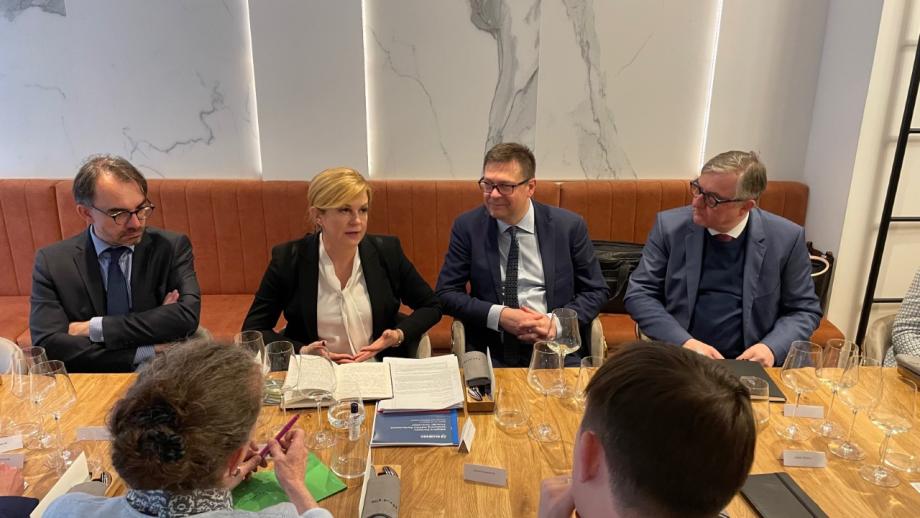GLOBSEC hosted President Kolinda Grabar-Kitarović for a dinner-briefing on defence spending and future of NATO’s innovation

22 April 2022
Last week GLOBSEC had the pleasure of welcoming former President of Croatia, Kolinda Grabar-Kitarović in Warsaw. During this exclusive closed-door event, President Grabar-Kitarović shared her views on the future of NATO innovations vis-à-vis the war in Ukraine.
Her appearance coincided with the introduction of the Future Security & Defence Council’s final report Adaptive Portfolio: Catalysing NATO’s Performance Through Innovation, which will be finalised and published soon.
The war in Ukraine has already served to increase defence spending across the Allies. This spike in spending is especially notable in countries on the Eastern border of NATO, most of which have already reached the target of 2% GDP spending on defence, and continue to invest in their capabilities. Latvia plans to ramp up the defence spending to 2.5% GDP, while Poland and Romania are planning to increase the spending to 3% of GDP. As announced by Chancellor Scholz, Germany will also increase the spending year by year, making its way up to 2% GDP. The country already committed to spending €100 billion for a defence fund, which should help boost German defence capabilities. Despite the current progress towards modernizing their armed forces and military equipment, the question remains whether the resources will be spent effectively.
For some time now, the growing geo-political tensions and the calls for investments in innovations and resilience, coming from experts and senior decision makers, have been growing steadily. Consequently, since the outbreak of the war, these calls have become even more urgent.

NATO unveiled the Defence Innovation Accelerator for the North Atlantic (DIANA), along with the NATO Innovation Fund. These tools should connect the private sector with the military end-users to develop solutions that would be effective and would mirror the needs of the future global battlefield. The narrative of innovation and modernization is, however, mainly technology-driven.
As has been touched upon during our event in Warsaw and as the report concludes, innovation should encompass cultural, conceptual, organizational, operational, and technological aspects. This is to ensure that innovation targets NATO’s needs thoroughly, boosting Alliance’s resilience and capability to answer to future challenges. As President Grabar-Kitarović astutely noted, smart investments in defence innovations may subsequently serve as one of the drivers of economy.
Against the backdrop of the war in Ukraine, innovations and modern technologies are clearly not at the forefront and have been demoted. Heavy military equipment deployed by Russia shows that ultimately, the war is fought without modern technologies. For this reason, it is worth asking if it is possible to deter a military built and operating with traditional heavy equipment with innovative technologies?
Therefore, it is crucial for NATO to identify its needs and objectives to frame a comprehensive plan for future innovation. Naturally, the threat perception of each member of the Alliance differs, which means that NATO needs to find an intersection, to specify what challenges lie ahead, and what defence solutions it wants to develop to respond.